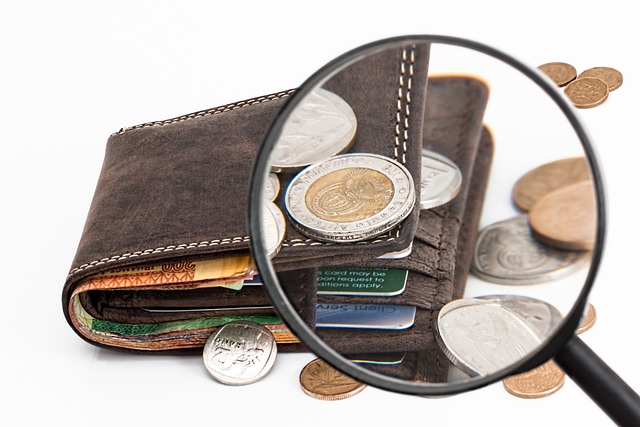The Importance of Starting an Emergency Fund Early
Life has a way of surprising us with unexpected expenses. Whether it’s a medical emergency, sudden job loss, or a necessary car repair, these financial curveballs can create stress and uncertainty. This is where an emergency fund comes into play, serving as a safety net during turbulent times. The importance of starting an emergency fund early can’t be overstated. Building this financial cushion becomes a cornerstone of personal finance and a significant step toward financial independence. You may wonder, why start an emergency fund now rather than later? Let’s explore the benefits and the strategies that will set you on the right path towards securing your financial future.
First and foremost, beginning your emergency fund early allows you to take advantage of time and compounding interest. The earlier you start saving, the more your money can grow. For instance, if you manage to save just $50 a month starting at age 25, by the time you hit retirement age, you could accumulate a substantial amount that could support you during your golden years. Think about it: If you save consistently, your small monthly contributions can blossom into a safety net that grows through interest and, possibly, smart investment choices. The power of compounding is indeed magical; even a small amount can add up considerably over time. Therefore, starting an emergency fund early is not just about saving money; it’s about making your money work for you over the long haul.
Moreover, having an emergency fund builds financial confidence and peace of mind. When unexpected expenses arise, your first instinct might be to panic. By having a dedicated fund ready, you can handle these challenges with a calm demeanor. You don’t need to rely on credit cards or loans that come with high-interest rates. Instead, you can cover your expenses without spiraling into debt. This sense of security lets you focus on what truly matters, whether it’s taking care of your health, focusing on your job, or spending time with loved ones. You gain not only financial stability but also mental clarity. You can sleep better at night knowing that you have a safety net in place, which allows you to take calculated risks in pursuing financial independence.
Another significant reason to start an emergency fund early is it safeguards your long-term financial goals. You may have dreams of buying a home, traveling the world, or starting your own business. However, an unexpected financial hiccup can derail those plans quickly. When you rely on your regular savings or, worse, credit to cover emergency costs, reaching for your financial aspirations can feel impossible. By establishing your emergency fund, you can protect those savings set aside for life’s big moments. It’s all about creating boundaries within your budget that can withstand life’s unpredictability. So, you can confidently push forward towards your goals without the fear of having to dip into your planned funds for unforeseen expenses.
Starting your emergency fund does not only prepare you for life’s unpredictabilities—it also teaches you to cultivate good saving habits. It creates a mindset of discipline and prioritization of savings, which extends to other aspects of your personal finance life. When you make it a point to automate your savings and treat it as a non-negotiable bill, you reinforce good financial behaviors. These habits will serve you well as you explore more complex financial tools and opportunities on your journey to financial independence. You become more equipped to handle various aspects of personal finance, from budgeting to investing. Starting an emergency fund is thus not just a one-off event; it’s a lifestyle shift that encourages further financial growth and literacy.
How Much Should You Aim to Save?
Now that we understand the importance of starting an emergency fund early, the next logical question is: how much should you save? Financial experts often recommend aiming for three to six months’ worth of living expenses. This may seem daunting initially, but it’s entirely manageable when broken down into smaller, achievable goals. Consider your monthly expenses, which include everything from rent and utilities to groceries and healthcare. By calculating your basic needs, you can identify a target savings number. Once you know how much you need, develop a savings timeline that feels realistic to you. Start small—saving even a modest amount every month can lead to significant progress over time.
Furthermore, you might want to keep your emergency fund in a place that’s easily accessible but separate from your everyday checking account. A high-yield savings account or money market account can provide you with the liquidity you need while also earning a bit of interest. This way, your money does not sit stagnant; it grows while remaining available when you need it the most. As your career and income evolve, revisit your emergency fund goal. If you experience a change in your cost of living, it’s a great idea to adjust your savings target accordingly. Having a plan in place and revisiting it regularly reinforces a proactive approach to handling unexpected financial hurdles.
Common Barriers to Starting an Emergency Fund
While starting an emergency fund is crucial, various barriers can make this seem like an unattainable goal. One major hurdle is the misconception that you need to have a significant amount of money saved up before starting. The truth is, every bit of saving counts. Even if you can only spare a small amount monthly, beginning somewhere matters more than the initial amount. Another common barrier relates to prioritization. Many people prioritize short-lived pleasures or immediate wants over long-term security. It’s normal to want to treat yourself, but striking a balance is essential for your financial health. Make sure you budget accordingly and dedicate a portion of your funds to your emergency fund, treating it with the same importance as utility bills or rent. It may also help to set specific goals to motivate you further.
Moreover, it might feel overwhelming, especially if you are currently living paycheck to paycheck. In this case, it’s all about adjusting your perspective. Look for areas in your budget where you could cut back, however small it may seem. It might be as simple as brewing your coffee at home rather than buying it every day. Sudden or small lifestyle changes can help free up additional cash for your emergency fund. Consider this challenge an opportunity rather than an obstacle. You can do it, and it becomes an empowering experience that reinforces your financial prowess. Every dollar saved adds up, and you’ll visually see your progress as you adhere to your savings plan, further motivating you to contribute more.
Setting Up Your Emergency Fund: Step by Step
Ready to start your emergency fund? Let’s break down a step-by-step approach. First, assess your financial situation. Determine your monthly expenses to establish a clear savings goal. Next, create a budget that allocates a portion of your income toward this fund. Setting up an automatic transfer to a high-yield savings account can smooth the process, making saving effortless. This automation takes the decision-making out of the equation at the end of the month. Pay yourself first by allocating those funds before you spend on other things. You might even want to visually track your progress, whether through graphs, apps, or simply a journal. Keeping tabs on your growth motivates you to stick with it and enables you to celebrate your accomplishments, big or small.
Additionally, commit to regularly reviewing and adjusting your budget. Life changes, and so should your financial strategies. As your income, expenses, or life circumstances alter, reassess your emergency fund goal and adjust your contributions to maintain alignment. Perhaps you’ve received a raise or your expenses have diminished. Use these opportunities to bolster your savings and continue building that stronger safety net. Remember, the goal is not just to start an emergency fund but to create a habit of financially protecting yourself. Making adjustments in your financial plan reinforces your commitment and adaptability, helping you remain proactive during uncertain times.
How to Maintain Your Emergency Fund
With your emergency fund off the ground, you must maintain it. Life can throw unexpected challenges your way, and it’s crucial to keep replenishing the fund as you use it. Consider it a living part of your financial ecosystem—when you draw from it, aim to contribute back what you’ve accessed as soon as circumstances allow. Think about this fund as a rainy-day savings account. The idea is not to let it deplete to zero. Adhering to this practice will strengthen your financial literacy and enhance the sense of security that the fund should provide.
In addition, treat your emergency fund respectfully. Avoid using it for non-emergent expenses, like short-term purchases or vacations, to maintain its integrity. Reserve this fund for true emergencies, which can be broadly defined as situations that threaten your financial well-being. If you ever find yourself dipping into your emergency fund, it’s essential to reevaluate your budget and necessities. Ask yourself if there are ways to further bolster your fund so that future needs can be met without compromising your financial stability. You will develop habits that lead to wiser financial decisions as you monitor and respect the parameters of your emergency fund.
Conclusion
No matter your current financial situation, establishing an emergency fund is always a worthy endeavor. It leads to peace of mind, stronger long-term financial health, and ultimately, a safer financial future. So, take that first step today and unlock the serenity that comes with being prepared for life’s unexpected twists and turns. Your future self will thank you for the effort you invest into starting your emergency fund early.
Frequently Asked Questions
What is an emergency fund?
An emergency fund is a dedicated savings account specifically for unexpected expenses, such as medical emergencies, car repairs, or job loss. It acts as a financial safety net.
How much should I have in my emergency fund?
Financial experts recommend saving three to six months’ worth of living expenses in your emergency fund. This amount can provide a comfortable cushion in case of unexpected financial challenges.
Where should I keep my emergency fund?
It’s best to keep your emergency fund in a high-yield savings account or a money market account. These options provide easy access while earning a bit of interest on your savings.
When should I use my emergency fund?
You should use your emergency fund for true emergencies that threaten your financial well-being, such as medical bills, essential repairs, or sudden job loss. Avoid using it for non-emergent expenses.
How do I start building an emergency fund?
To start building your emergency fund, assess your monthly expenses, set a savings goal, and create a budget that allocates a portion of your income each month. Consider automating your savings for consistency.



